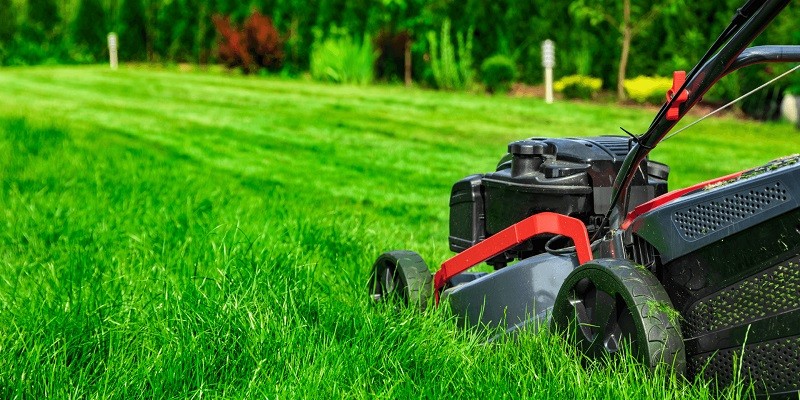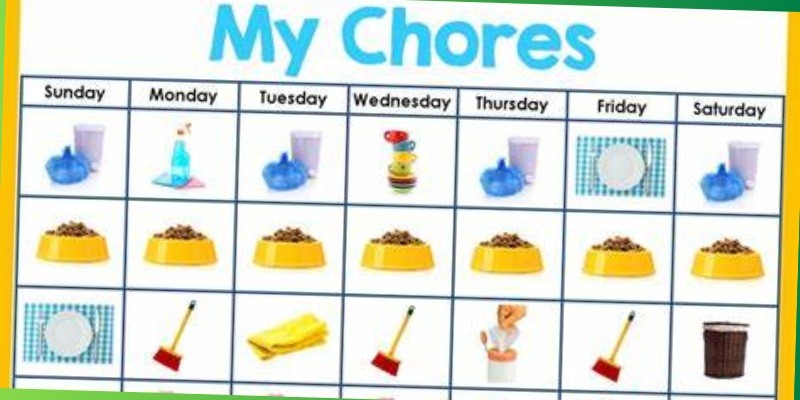Last Updated on January 15, 2025
Mow before a lawn treatment to allow the treatment to penetrate the grass more effectively. Mowing before a lawn treatment helps the treatment reach the targeted areas and provides better results.
A well-maintained lawn enhances the beauty of any property, and regular lawn treatments play a crucial role in keeping it healthy and vibrant. Whether you’re dealing with weeds, pests, or fertilization, timing is key when it comes to achieving optimal results.
One common question homeowners have is whether to mow before or after applying a treatment. We will discuss the importance of mowing before a lawn treatment and how it can benefit the overall effectiveness of the treatment. By following this simple guideline, you can ensure that your lawn receives the maximum benefits from any treatment you apply.
Timing Considerations For Optimal Lawn Treatment
Timing considerations for optimal lawn treatment are crucial. It is recommended to mow your lawn before a treatment to allow the applied products to penetrate the soil better and provide effective results.
A beautiful and healthy lawn requires proper care and maintenance. One common question that homeowners often ask is whether they should mow before or after a lawn treatment. The timing of your lawn treatment plays a crucial role in its effectiveness and overall impact on your grass.
In this section, we’ll explore the factors affecting timing, the best time of day for lawn treatment, and the impact of mowing on the effectiveness of your lawn treatment.
Factors Affecting Timing
The timing of your lawn treatment depends on several factors that can influence its effectiveness. Consider the following factors when deciding when to schedule your lawn treatment:
- Weather conditions: It’s important to take into account the prevailing weather conditions before applying any lawn treatment. Ideally, you should avoid treating your lawn during periods of heavy rain or strong winds, as these can reduce the effectiveness of the treatment.
- Growth stage of the grass: Different types of lawn treatments are designed to target specific issues at various stages of grass growth. For instance, herbicides are most effective when applied during the active growing season, while fertilizers may work best when applied before or after the peak growth period.
- Type of treatment product: Each lawn treatment product comes with specific instructions regarding timing and application. Read the product label carefully to determine the optimal timing for applying the treatment.
Best Time Of Day For Lawn Treatment
The timing of your lawn treatment can also impact its effectiveness. Consider the following guidelines when deciding on the best time of day for applying lawn treatment:
- Early morning or late afternoon: It’s generally recommended to apply lawn treatments during the early morning or late afternoon. During these times, the temperatures are cooler, and the grass is less stressed, allowing the treatment to penetrate the grass effectively.
- Avoid midday heat: Avoid applying lawn treatments during the hottest part of the day, typically between 10 am and 2 pm. High temperatures can cause the treatment to evaporate quickly, reducing its effectiveness.
- Calm wind conditions: Choose a day with calm wind conditions to prevent the treatment from drifting and affecting neighboring vegetation or areas where you don’t want the treatment applied.
Impact Of Mowing On Lawn Treatment Effectiveness
Mowing your lawn before or after a treatment can have a significant impact on its effectiveness. Here are some key considerations regarding mowing and lawn treatment:
- Mow before treatment: In most cases, it’s recommended to mow your lawn a day or two before applying any treatment. This allows the treatment to reach the base of the grass effectively. Additionally, mowing before treatment ensures that the grass is at an optimal height for treatment application.
- Mow after treatment: After applying a lawn treatment, wait for a few days before mowing your lawn. This allows the treatment to take effect and reduces the risk of removing it prematurely. However, avoid waiting too long to mow, as longer grass can impede the treatment’s absorption and effectiveness.
Remember to read the specific instructions provided by the manufacturer for the treatment product you are using. These guidelines will give you valuable insights into when to mow and apply the treatment for optimal results.
Now that you understand the timing considerations for lawn treatment, you can make informed decisions about when to mow and apply treatments to ensure a healthy and vibrant lawn. By following these guidelines, you’ll be well on your way to achieving the lush and beautiful lawn you desire.
Benefits Of Mowing Before A Lawn Treatment
Mowing before a lawn treatment offers numerous benefits. By trimming the grass beforehand, the treatment can penetrate more effectively, ensuring maximum absorption and results. Additionally, it helps to create an even and aesthetically pleasing appearance for your lawn.
Enhanced absorption of treatments:
- Mowing your lawn before a treatment allows for better absorption of the treatment into the grass. This is because freshly cut grass has increased surface area, enabling more direct contact between the treatment and the grass blades.
- Cutting the grass also helps to open up the pores of the grass, facilitating easier and more effective absorption of nutrients and chemicals from the treatment.
- The enhanced absorption leads to faster and more noticeable results, as the treatment can penetrate the grass more efficiently.
Reduced interference with treatment application:
- Mowing before a lawn treatment reduces the interference caused by tall or overgrown grass. When the grass is too long, it can inhibit the even distribution of the treatment, resulting in patchy results.
- By mowing the lawn prior to treatment, the grass blades are shortened to a more manageable length. This helps to ensure that the treatment is evenly applied throughout the lawn, maximizing its effectiveness.
- Additionally, shorter grass minimizes the risk of the treatment getting clogged or stuck in the thick foliage, allowing it to be spread more evenly across the lawn.
Improved overall treatment efficacy:
- Mowing before a lawn treatment improves the overall efficacy of the treatment. By removing excess height, the treatment can reach the grass roots more efficiently, delivering nutrients or chemicals where they are needed most.
- When the treatment can access the roots more effectively, it promotes stronger and healthier grass growth. This leads to a more vibrant and lush lawn.
- Moreover, by maintaining a consistent mowing schedule, the lawn treatment can be applied more regularly without causing stress to the grass, resulting in long-lasting benefits.
Mowing before a lawn treatment offers several advantages, including enhanced absorption of treatments, reduced interference with treatment application, and improved overall treatment efficacy. Taking the time to prepare your lawn before applying any treatments can significantly contribute to the health and appearance of your grass.
By following this simple step, you can optimize the effectiveness of treatments and ensure a beautiful, well-maintained lawn.
Benefits Of Mowing After A Lawn Treatment
Mowing after a lawn treatment offers numerous benefits. It helps to evenly distribute the treatment, allows for better absorption, promotes healthy grass growth, and enhances the appearance of your lawn.
One of the key considerations when it comes to lawn maintenance is the timing of mowing in relation to lawn treatments. While there is no one-size-fits-all answer, mowing after a lawn treatment offers several benefits that can enhance the application coverage, reduce the risk of treatment runoff, and improve the long-term health and appearance of your lawn.
Let’s explore these benefits in detail:
Enhanced application coverage:
- By mowing after a lawn treatment, you ensure that the treatment is evenly distributed across the entire lawn. This allows for better coverage and penetration, maximizing the efficacy of the treatment.
- Mowing helps in breaking down any uneven clumps of treatment material, ensuring a more even spread across the grass blades and soil surface.
- It also helps the treatment to reach areas that may have been missed during the application process, providing more comprehensive protection or nourishment for your lawn.
Reduced risk of treatment runoff:
- Mowing after a lawn treatment helps to minimize the chances of treatment runoff. When you mow, the grass blades act as a barrier, preventing the treatment from being washed away by rain or irrigation.
- The freshly cut grass also helps in absorbing any excess treatment, preventing it from running off into adjacent areas or water bodies.
- This reduces the environmental impact of the treatment and ensures that the intended benefits are preserved within your lawn.
Improved long-term lawn health and appearance:
- Mowing after a lawn treatment can contribute to the long-term health and appearance of your lawn. When properly timed, it allows the treatment sufficient time to be absorbed and take effect before the grass is shortened.
- The combination of mowing and treatment promotes uniform growth, discouraging weeds from establishing and ensuring a lush and vibrant lawn.
- By mowing after a treatment, you can groom your lawn and achieve a tidy, well-manicured look. This can enhance the visual appeal of your outdoor space and create a welcoming environment for relaxation and entertainment.
Remember, the best approach to lawn maintenance may vary depending on factors such as the type of treatment, weather conditions, and specific requirements of your lawn. It is always recommended to consult with a professional or refer to the specific instructions provided by the product manufacturer or lawn care service.

Credit: yardcare.toro.com
Frequently Asked Questions For Should I Mow Before Or After A Lawn Treatment?
Is It Better To Mow Before Or After Lawn Treatment?
Mow after lawn treatment for better results.
Is It Better To Fertilize After Mowing?
It is better to fertilize after mowing for optimal nutrient absorption and lawn health.
Should I Mow Before Applying Crabgrass Preventer?
Yes, it is recommended to mow before applying crabgrass preventer for optimal results.
Is It Better To Mow Before Or After Watering?
It is better to mow the lawn before watering.
Faq 1: Can I Mow Before A Lawn Treatment?
Yes, it is recommended to mow your lawn before a treatment to ensure the treatment reaches the grass thoroughly.
Conclusion
Maintaining a healthy and vibrant lawn requires regular care and attention. One common question homeowners often have is whether to mow before or after a lawn treatment. While there isn’t a one-size-fits-all answer, it’s important to consider a few factors.
Firstly, mowing before a treatment ensures that the products can penetrate the soil and reach the roots more effectively. It also helps to remove any debris or obstacles that may hinder the treatment’s effectiveness. On the other hand, mowing after a treatment allows the products to settle and provides a more even application throughout the lawn.
Additionally, it helps to prevent the spread of any potential weeds or pests that may have been present before the treatment. Ultimately, the decision of when to mow depends on the specific needs of your lawn and the type of treatment being applied.
It’s always best to consult with a lawn care professional for personalized advice tailored to your situation.







